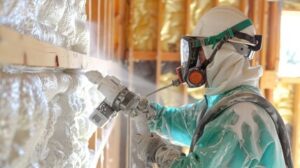Lodging Solutions is a broad term that refers to the variety of accommodation types available. It can range from a small island hut or tent to a luxury all-inclusive resort.

Despite ongoing challenges, most lodging markets have recovered to pre-pandemic levels of occupancy, average daily rates, and revenue generation. Lodging tax revenues are increasing in most cities, but growth is expected to slow.
Revenue per available room (RevPAR) is one of the most popular and critical metrics used to measure performance in the hospitality industry. It measures the average daily rate earned by a hotel and the percentage of its rooms that were occupied during a specific period of time. Hoteliers use this metric to compare their performance against that of their competitors and identify opportunities for improvement.
There are several factors that contribute to RevPAR, including the average daily rate and occupancy rate. It is important to calculate the metric with accurate data and remove mandatory taxes and fees, as these can inflate the figure. It is also advisable to track the performance of individual hotels individually, as different properties might have varying room types and additional revenue streams that are not included in the standard calculation.
Hoteliers can improve their RevPAR by increasing the number of people staying at their property. This can be accomplished by improving marketing and distribution strategies. They can also offer special packages, such as spa treatments or dining credits that are bundled with room bookings. Alternatively, they can increase the minimum length of stay during high-demand periods to maximize revenue.
A key challenge is maintaining a balance between room rates and occupancy. By focusing on the former, hoteliers risk losing out on ancillary revenues. In addition, focusing solely on the latter may result in higher operating costs, which will ultimately hurt profit. Achieving a balance between these two factors requires a strategic approach that involves optimizing various aspects of hotel management.
While standard ADR and occupancy rates are essential for measuring revenue generation, RevPAR offers a more holistic perspective of a hotel’s performance. In addition to evaluating the performance of room sales, it also considers the ancillary income from a hotel’s food and beverage offerings and other amenities. By taking these additional revenues into account, the metric can give hoteliers an accurate picture of their profitability.
A higher RevPAR often reflects successful marketing and pricing, as well as a strong competitive position in the market. This metric is especially useful during peak seasons when hotels need to maximize revenue potential and ensure a positive customer experience. To boost RevPAR, hotels can also focus on reducing operating expenses by leveraging their technology and optimizing their revenue management processes.
Room supply
Hotels need to keep supply at a steady rate to ensure that they have enough rooms to meet demand. However, the rate of hotel new supply growth has slowed since the COVID-19 pandemic due to higher interest rates and slowing job creation. As a result, hotel room demand growth has been outpaced by new supply and is projected to flatten in 2023. This has led to aggressive rate competitiveness in many markets. This is also a concern for Airbnb, which can compete with hotels for room nights.
Taxes
Lodging taxes are a source of revenue for local governments. In addition to state and city sales taxes, some cities impose an additional lodging tax that is levied on a hotel’s total room revenues. Some states also levy an excise tax on lodging transactions. These types of taxes are less volatile than percentage-based lodging taxes, and do not fluctuate with room rate changes or occupancy.
Some local governments use their lodging taxes for tourism-oriented public programs and events, such as convention center construction, advertising, and tourism development. Others allocate a portion of their lodging taxes to the operation of local museums, theaters, or art galleries. Some jurisdictions have local lodging advisory committees that determine how to spend these funds. In these cases, the committee must submit a proposal to the local government governing body for approval.
In some states, the legislature and governor authorize specific uses of lodging taxes. These include funding tourism promotion initiatives, purchasing equipment to attract visitors, and providing grants to community organizations that promote tourism in the jurisdiction. The committees must provide a detailed description of the proposed expenditure and explain how it will increase tourism in the jurisdiction. The local council may then approve the use of the funds.
Local lodging taxes can be collected by municipalities and deposited in the municipal general fund or other designated funds. In some cities, the municipality share of a state hotel tax is distributed directly to the municipality. In other cases, the municipal share of the hotel tax is incorporated into the overall municipal sales and excise taxes.
Lodging taxes can be imposed at the state, city, or special district level. Some states have separate statewide and city lodging taxes, while others allow only city-level lodging taxes. Some cities impose a single lodging tax, while others levy multiple rates and charges.
Employers should consider the tax nuances associated with employer lodging. The value of employer lodging is taxable to employees unless it meets the requirements of the fringe benefit exclusions under 26 CFR 1.162-32 and IRC Sections 132 and 162(a). Tax professionals can help employers navigate these complex rules effectively.
Airbnb
Airbnb is a popular home rental service that connects hosts with guests who want to visit unique destinations around the world. The platform’s search algorithm considers a variety of factors, including guest reviews, booking history, and host response time. Understanding how these factors affect your visibility on Airbnb can help you improve your listings and secure more bookings.
To maximize your Airbnb listing’s visibility, make sure to use high-quality photos, accurate descriptions, and an appealing title. In addition, it is important to respond quickly to inquiries and provide a clear overview of the property’s amenities. This will help you build trust with potential guests and increase your likelihood of receiving positive reviews.
Another way to improve your Airbnb ranking is to offer competitive pricing and maintain high levels of guest satisfaction. You can do this by adjusting your prices based on market trends and offering discounts during low-demand periods. In addition, you can also use the platform’s Smart Pricing tool to automate dynamic pricing.
A consistent 5-star rating is one of the most important factors in determining your Airbnb listing’s visibility on the platform. In addition, encouraging reviews and ensuring guest satisfaction will help you stand out from the competition. You can encourage reviews by requesting them politely after each stay, and you should always read and respond to them in a professional manner.
Airbnb offers a variety of support channels for both guests and hosts. You can contact Airbnb support by phone, email, or online chat. You can also access the Airbnb Resolution Center if you have a problem with your reservation. The Resolution Center is available 24/7 and provides a range of resources for solving problems related to your reservation.
You can also use professional hosting tools to track your listings’ performance on Airbnb. These tools will show you how many bookings you have received and compare them to your average nightly rate. They will also highlight any areas where you need to focus your efforts, such as improving your commitment rate or response time. You can also use these tools to monitor your progress towards becoming a Superhost.

